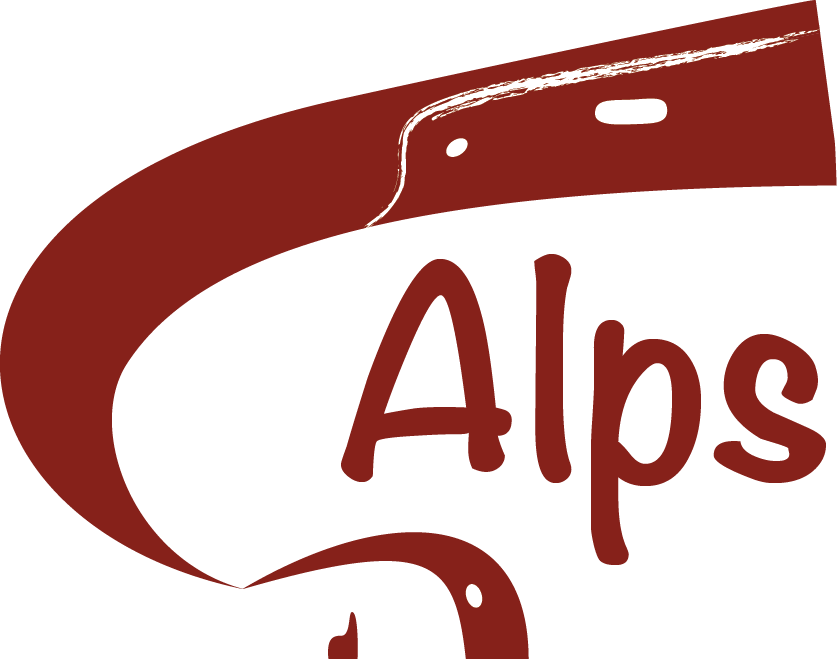
Metamorphic map of the Alps
Based on such mineralogical work, Ernst (1971) was able to use the plate tectonic concept for proposing a first modern model for the evolution of the Alps. Such ideas developed further on the base of work, such as that of Dal Piaz et al. (1972), Dal Piaz (1974a, b) and Hunziker (1974), just to name a few. Frey (1969), as well as Trommsdorff (1966), started to investigate metamorphism in isochemical systems provided by shales and siliceous carbonates, respectively. This allowed for quantitatively constraining the Cenozoic temperature evolution in the Central Alps. Frey et al. (1999) compiled all available information on the peak temperature distribution, and used the occurrence of eclogites to display the dynamics of the Alpine evolution. Previous works of this kind led to the compilation of a new map showing the metamorphic structure of the Alps (Oberhänsli et al. 2004). This new map was also based on (1) new tectonic concepts and maps (Schmid et al, 2004 and Bousquet et al., 2012), (2) a wealth of new radiogenic age data (for references see Berger and Bousquet), and (3) an extension of the facies concept based on mafic to metapelitic rock-compositions.
The Map
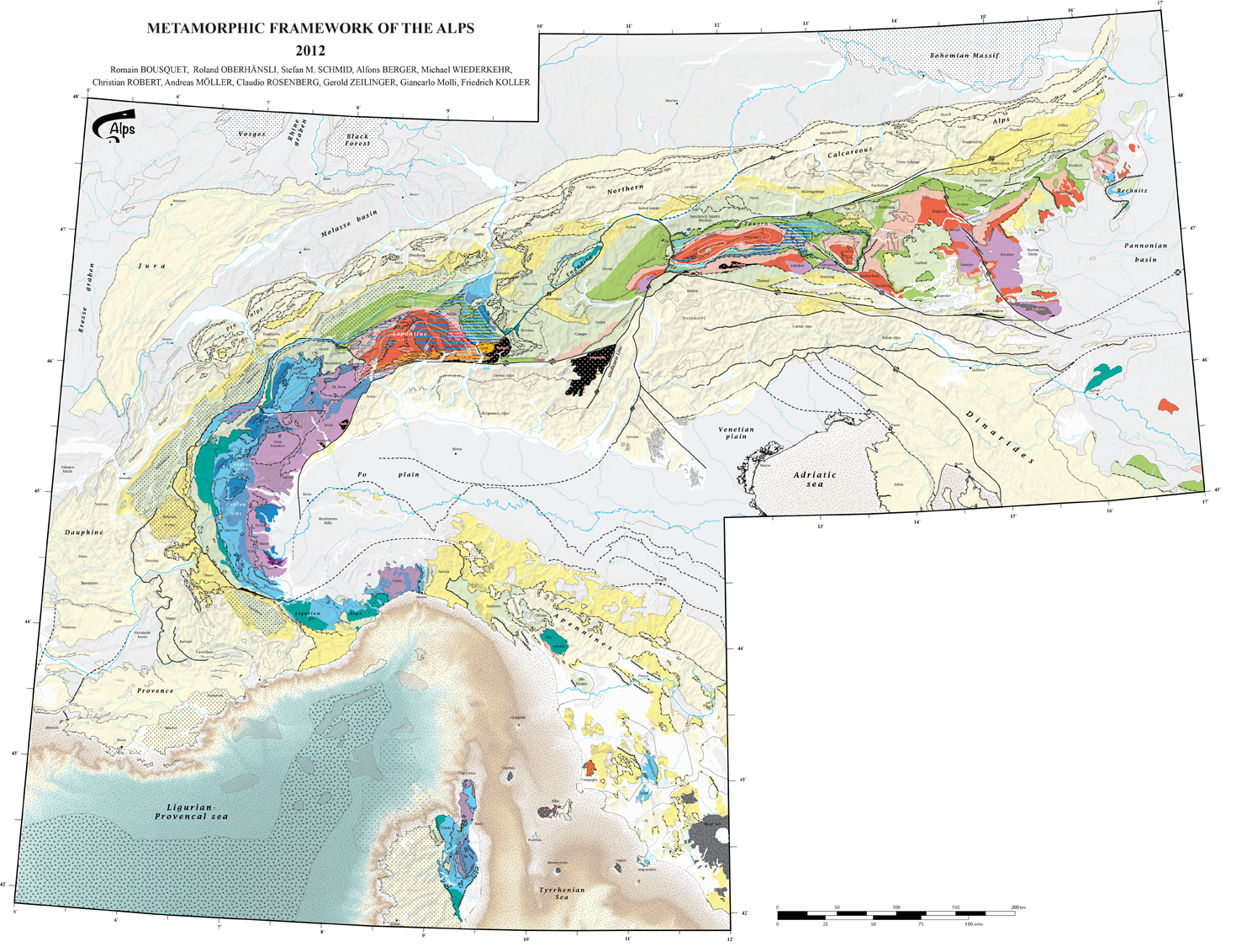
click on the picture for more details or to zoom
Profiles
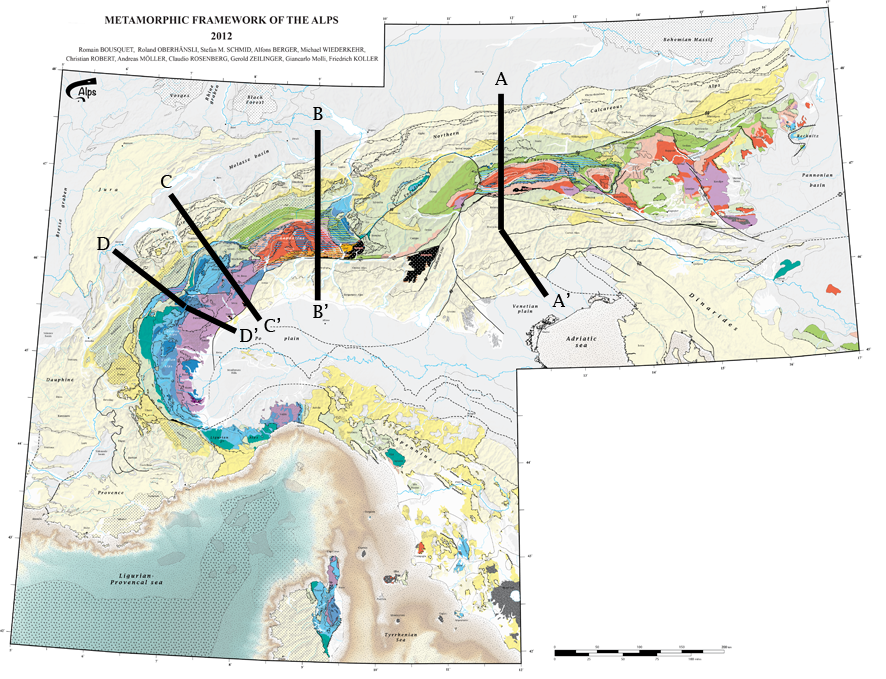 |
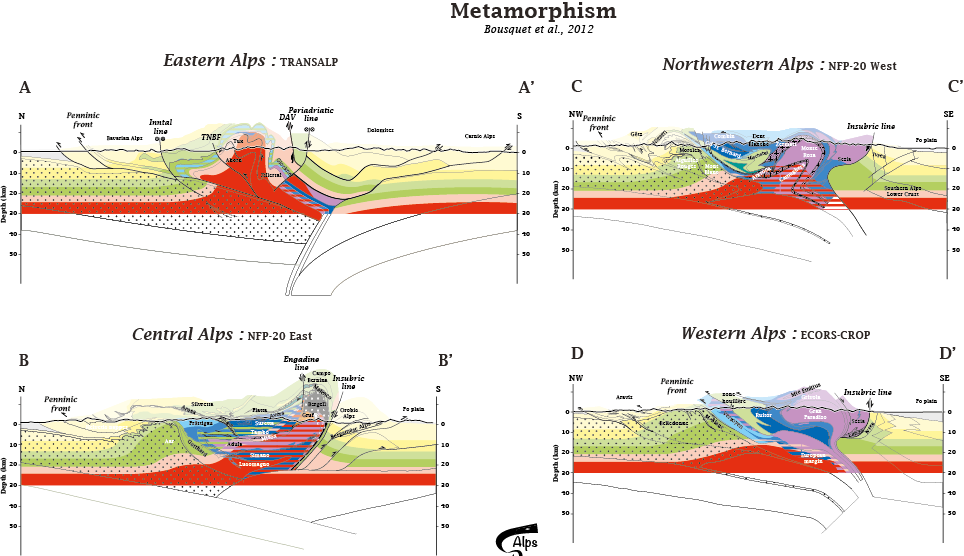 |
||
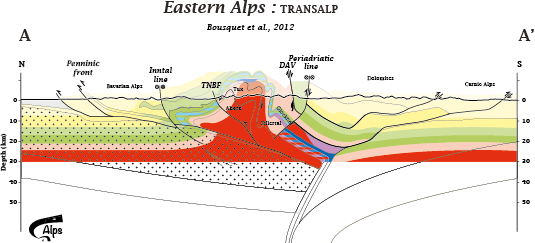 |
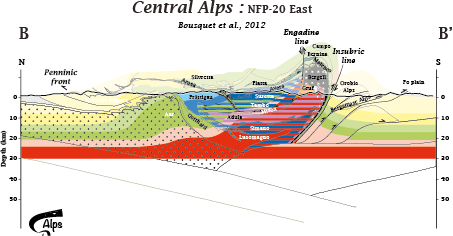 |
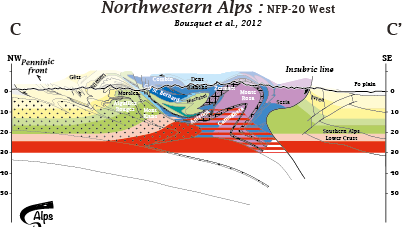 |
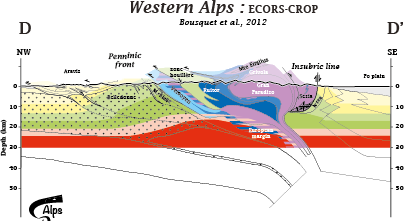 |
Metamorphic facies
The grid
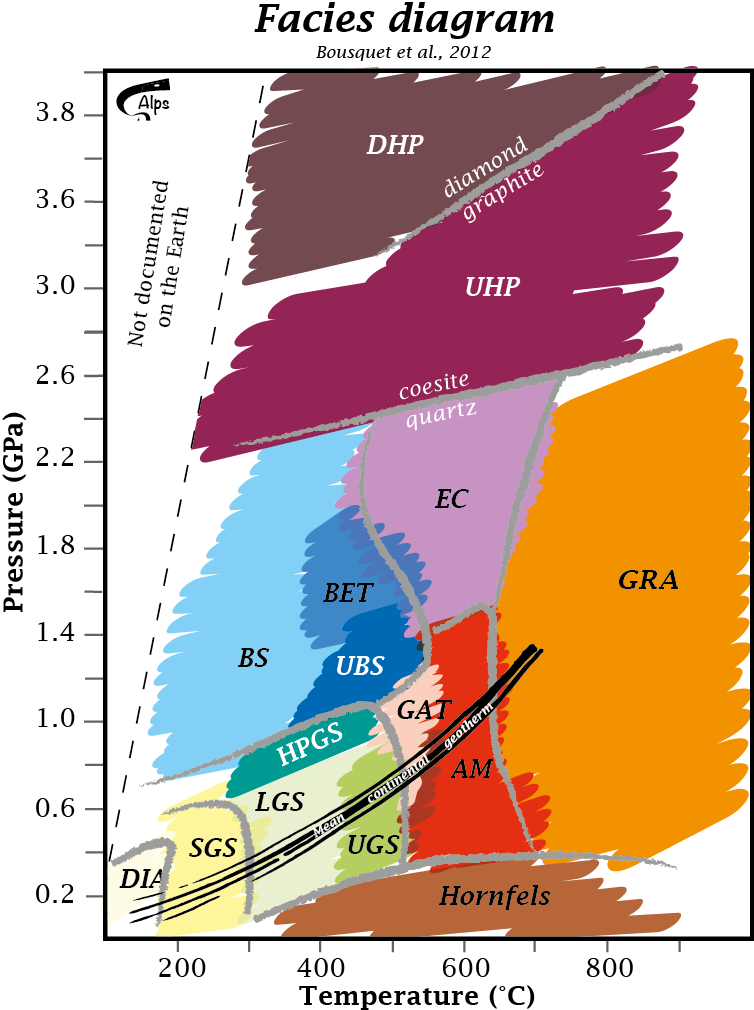
We proposed a new type of metamorphic facies grid better integrating field observations into models of the geodynamic.
This facies grid also taken into account the importance of metasediments, which is less clear in traditional grids.
The proposed grid also involved more subdivisions, which are based on the understanding of the metasediments.
The mineralogical description

The rules
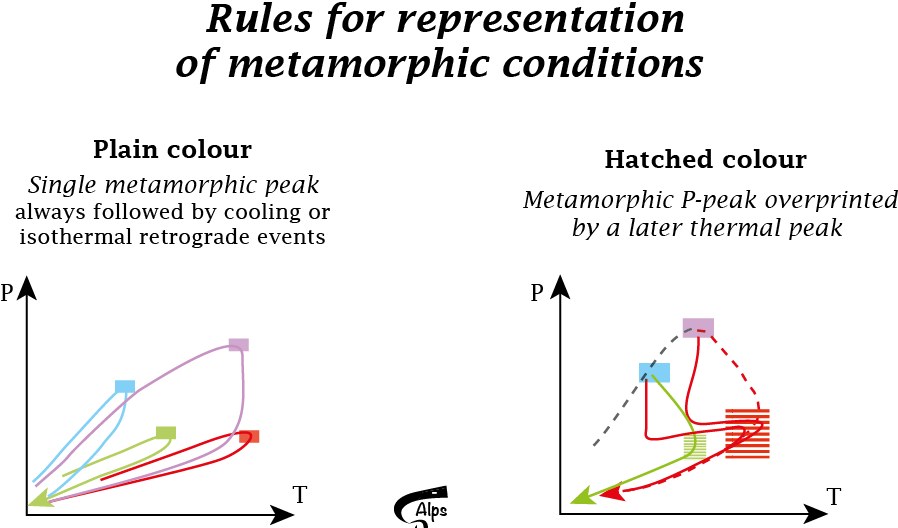 Assignment of a metamorphic rock to a metamorphic facies is based on its mineralogy. In the best case a rock might undergo a simple metamorphic evolution in a distinct geodynamic setting, leading to a peak metamorphic paragenesis (simultaneous P and T peaks) possibly followed by later retrogression. However, a metamorphic pressure-peak related to one geodynamical scenario may also have been overprinted by a thermal peak that resulted from a second and different geodynamic scenario.
Assignment of a metamorphic rock to a metamorphic facies is based on its mineralogy. In the best case a rock might undergo a simple metamorphic evolution in a distinct geodynamic setting, leading to a peak metamorphic paragenesis (simultaneous P and T peaks) possibly followed by later retrogression. However, a metamorphic pressure-peak related to one geodynamical scenario may also have been overprinted by a thermal peak that resulted from a second and different geodynamic scenario.
Hence, in such a case metamorphic facies is ambiguous in that it is difficult to distinguish between continuous and discontinuous evolutions. It is only the exact shape of the P-T path, details that are often difficult to constrain, which is specific for a complex geodynamic evolution. For example, the significance of the amphibolite facies mineralogy is ambiguous. It may either represent a single path that entirely formed in a collision setting; alternatively it may merely represent an exhumation stage that formed during ongoing subduction and before final collision. In the case of dual peak paths details regarding amphibolite facies overprint are crucial for better understanding exhumation processes in general and details of the transition from subduction to collision in particular.
Regional maps
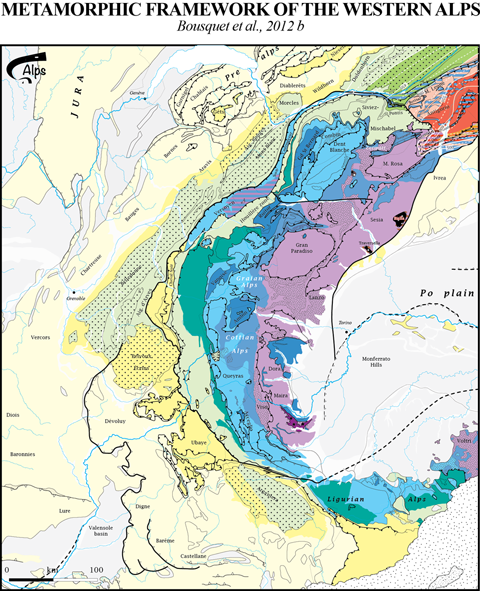 |
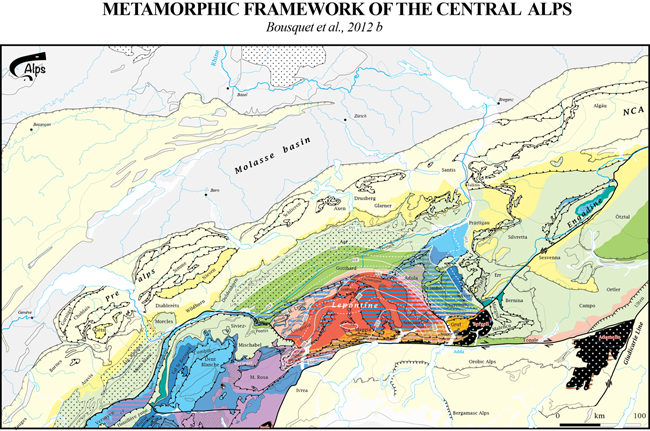 |
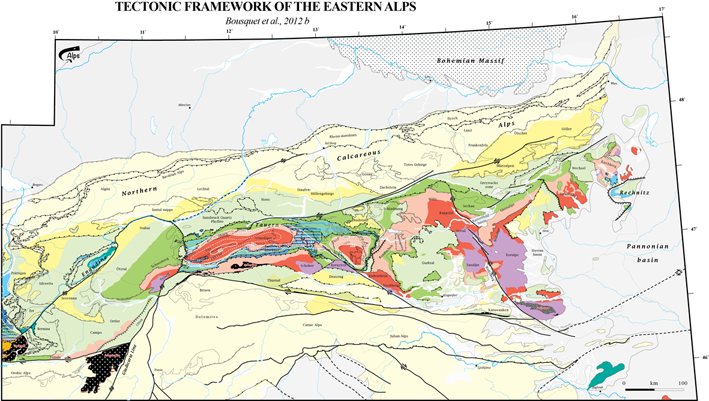 |
References
To cite documents from this page
